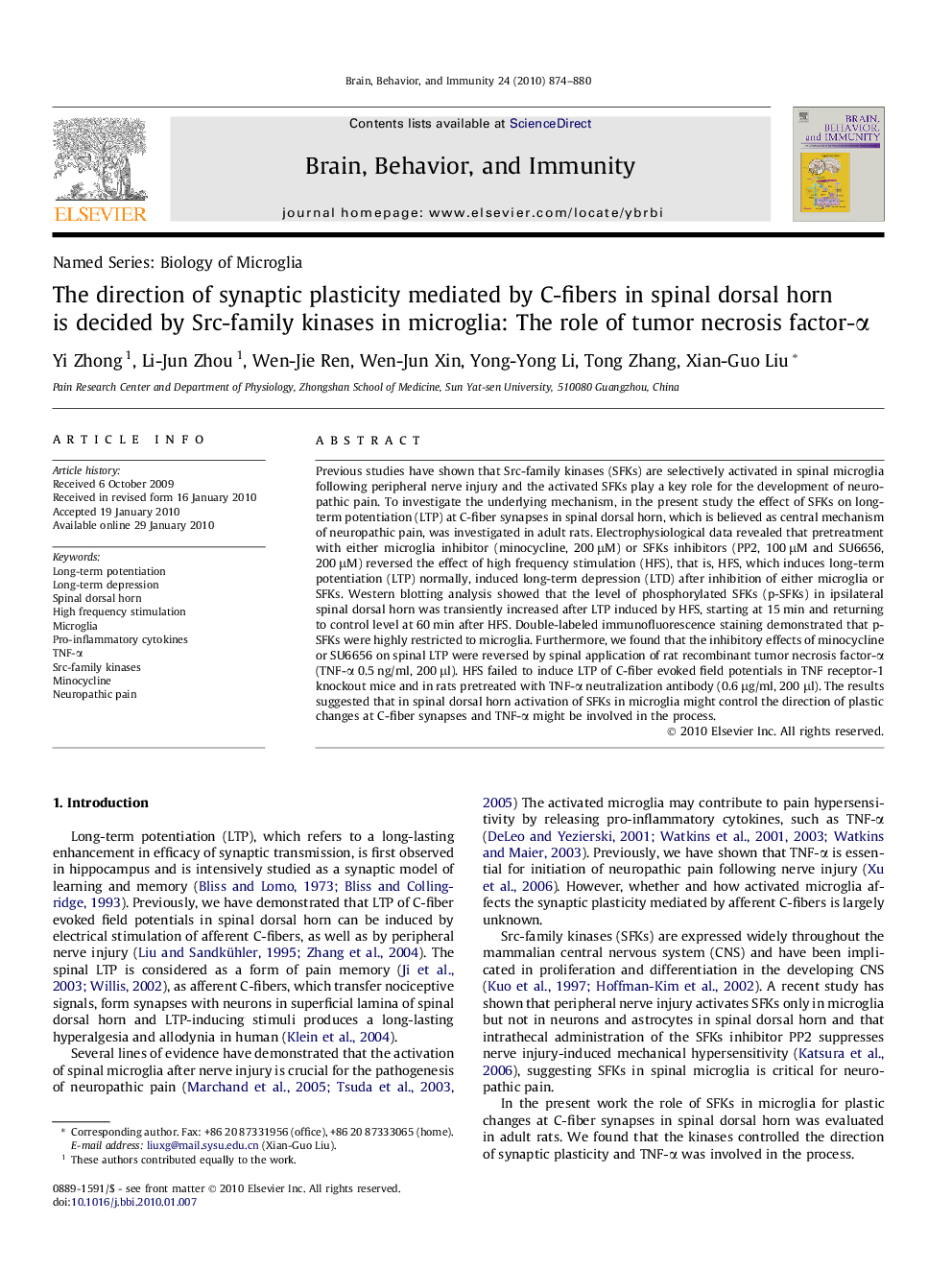| Article ID | Journal | Published Year | Pages | File Type |
|---|---|---|---|---|
| 10455064 | Brain, Behavior, and Immunity | 2010 | 7 Pages |
Abstract
Previous studies have shown that Src-family kinases (SFKs) are selectively activated in spinal microglia following peripheral nerve injury and the activated SFKs play a key role for the development of neuropathic pain. To investigate the underlying mechanism, in the present study the effect of SFKs on long-term potentiation (LTP) at C-fiber synapses in spinal dorsal horn, which is believed as central mechanism of neuropathic pain, was investigated in adult rats. Electrophysiological data revealed that pretreatment with either microglia inhibitor (minocycline, 200 μM) or SFKs inhibitors (PP2, 100 μM and SU6656, 200 μM) reversed the effect of high frequency stimulation (HFS), that is, HFS, which induces long-term potentiation (LTP) normally, induced long-term depression (LTD) after inhibition of either microglia or SFKs. Western blotting analysis showed that the level of phosphorylated SFKs (p-SFKs) in ipsilateral spinal dorsal horn was transiently increased after LTP induced by HFS, starting at 15 min and returning to control level at 60 min after HFS. Double-labeled immunofluorescence staining demonstrated that p-SFKs were highly restricted to microglia. Furthermore, we found that the inhibitory effects of minocycline or SU6656 on spinal LTP were reversed by spinal application of rat recombinant tumor necrosis factor-α (TNF-α 0.5 ng/ml, 200 μl). HFS failed to induce LTP of C-fiber evoked field potentials in TNF receptor-1 knockout mice and in rats pretreated with TNF-α neutralization antibody (0.6 μg/ml, 200 μl). The results suggested that in spinal dorsal horn activation of SFKs in microglia might control the direction of plastic changes at C-fiber synapses and TNF-α might be involved in the process.
Keywords
Related Topics
Life Sciences
Immunology and Microbiology
Immunology
Authors
Yi Zhong, Li-Jun Zhou, Wen-Jie Ren, Wen-Jun Xin, Yong-Yong Li, Tong Zhang, Xian-Guo Liu,
